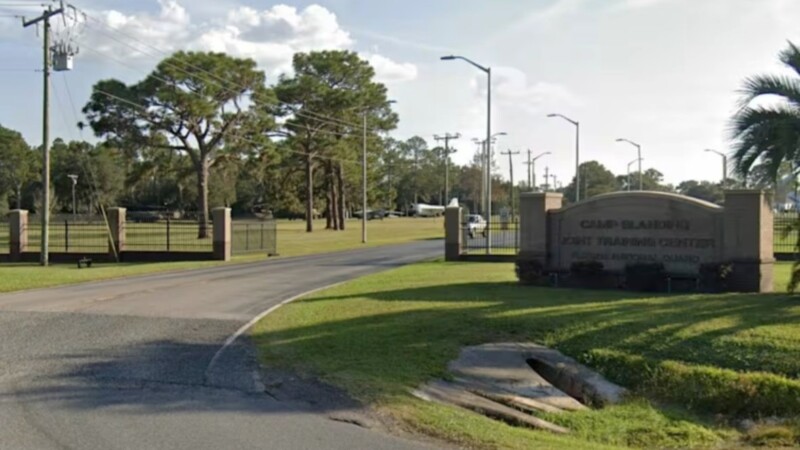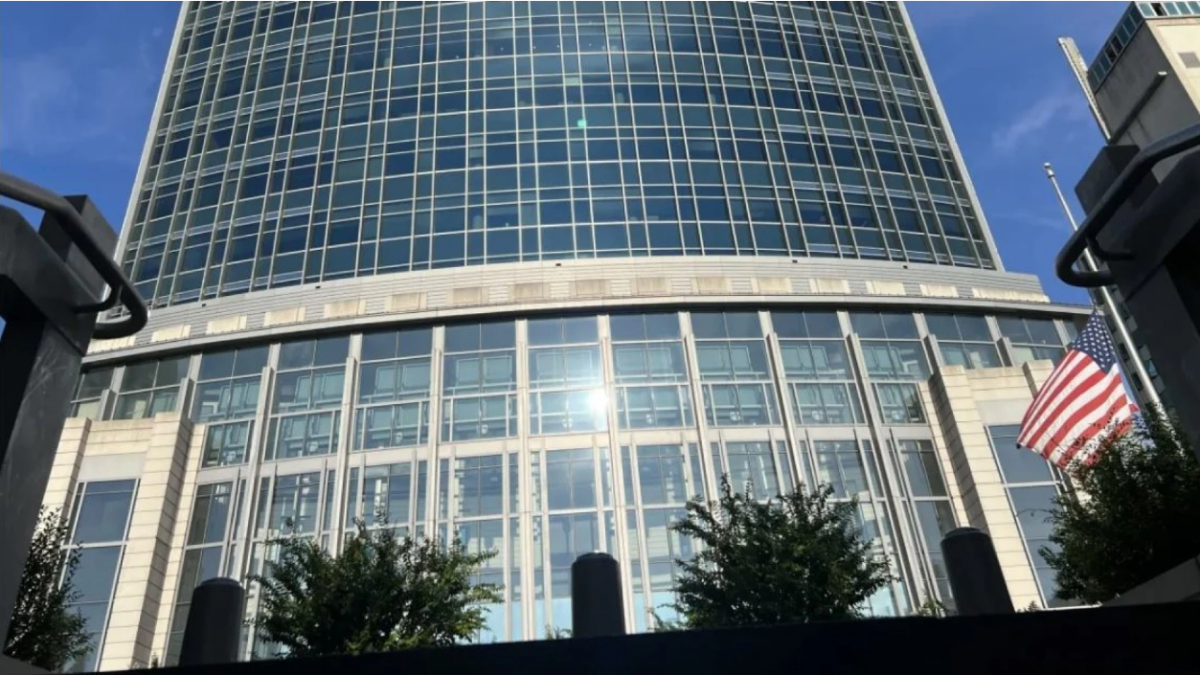The city of Jacksonville will pay $200,000 to the family of a Florida A&M University student whom an officer killed during a traffic stop in 2019.
The family of 22-year-old Jamee Johnson filed the lawsuit against Jacksonville sheriff’s officer Josue Garriga, former Sheriff Mike Williams and the city in 2021. All parties reached a settlement in August, and the case was dismissed Monday.
Despite the payment, the city did not admit Garriga did anything wrong as part of the settlement. Instead, the city said it was settling due to the “uncertainty” of a trial.
Neither the Jacksonville Sheriff’s Office nor the State Attorney’s Office returned a request for comment.
Garriga had recently garnered renewed attention after he participated in an arrest in September that went viral. While trying to handcuff Le’keian Woods, 24, Garriga and several other officers punched and kneed Woods more than a dozen times.
Woods had run off from a traffic stop that followed an alleged armed drug deal that police said they witnessed. A gun was not found on Woods but was found in the pocket of another passenger who was arrested without incident.
Sheriff T.K. Waters defended Garriga and the other officers involved in that arrest, saying that officers followed procedure and that while force is sometimes ugly, that doesn’t mean it’s unlawful. The U.S. Department of Justice reviewed the arrest and agreed that the officers didn’t break the law. All have returned to work.
Years earlier, Garriga garnered national attention after he killed Johnson during a visit home on Dec. 14, 2019. Garriga stopped Johnson for not wearing a seat belt. In July 2020, State Attorney Melissa Nelson ruled that Garriga was justified in Johnson’s killing.
Johnson was pulled over as part of the Sheriff’s Office’s “violent-crime reduction strategy,” which attempts to use traffic stops to find drugs and guns in neighborhoods where violent crime is most prevalent.
Garriga, who is Black and Hispanic, would later criticize the NFL for recognizing Johnson’s death. He texted a group chat of his fellow gang-unit officers that Johnson was a “clown” and the acknowledgment “goes to show no matter how wrong they are they still will be recognized just because they are Black.” After another officer said Garriga’s message was disrespectful, he responded, “It’s truth.”
In the lawsuit, Johnson’s family questioned a key part of Garriga’s retelling of what happened — that Johnson was actually unarmed and had his hands raised when he was shot four times.
What the body camera showed
After he stopped Johnson, Garriga said he smelled something like marijuana. The officer asked Johnson if there was anything he needed to know about that car, and Johnson told him he had a gun. Garriga asked him to step out of the car, and Johnson asked if he should get the receipt for the gun.
“Naw, I’ll get all that in just a second,” Garriga said. “I don’t want you reaching.”
He asked where the gun was, and Johnson told him it was in his jacket, which Johnson wasn’t wearing.
Johnson told Garriga he had been smoking hemp, which is legal, and declined a vehicle search, saying that the only thing officers would find is his legal firearm. Both men had a conversation about the legality of Johnson’s firearm being inside his jacket and without a holster while driving. Garriga told him it wasn’t good that he was carrying the firearm “in an illegal fashion.”
Garriga told Johnson that he was going to put him in the back of the police car so he wouldn’t run off while Garriga checked the serial number on the gun.
Johnson, who was standing just outside the driver’s seat of the car with the door open, asked if he could walk to the car himself. Garriga said no. Then Johnson asked to grab his ID from the top of the car, and Garriga again said no.
Meanwhile, Officer Kristopher Graham was standing behind the men. The video from Graham’s body camera showed that after he asked for his ID, Johnson lunged back into the car. Garriga immediately grabbed him, and his body camera was knocked off of its mount.
Graham’s body camera showed that Garriga and Johnson struggled in the car. In a statement later, Garriga said that Johnson grabbed the gun with his right hand. While struggling with Garriga, Johnson’s foot hit the gas pedal and the car drove forward into the front yard of a house.
Several seconds after the car stopped, Garriga is seen moving back from the open door as he shoots Johnson. The State Attorney’s Office said Garriga “used the least amount of force necessary to prevent Johnson from arming himself.”
“But Johnson resisted police efforts and continued to struggle to gain control of his firearm,” the report said. “Johnson then managed to put the car into drive and accelerate the vehicle toward an occupied home, dragging the officers along with him. The car crashed through a fence and came to a stop in the yard of a nearby residence. As Officer [Kristopher] Graham was attempting to enter the car to assist, Officer Garriga fired four gunshots. Officer Garriga quickly exclaimed, `He tried to grab his gun on me.’”
After being shot, Johnson told the two officers that he couldn’t breathe.
“I’m dying, sir,” Johnson said. “Please, God. I pray to God I don’t die.”
In a written statement several months after the shooting, Garriga said Johnson grabbed his gun.
“During the physical struggle, I was able to grab the right wrist of the driver, which the handgun was still in, and was able to push myself out of the vehicle,” Garriga wrote. “As I exited, I observed the suspect moving his body in my direction and I believed he still had the gun in his possession. Fearing for my life I fired my issued firearm at the suspect until no longer a threat.”
The struggle wasn’t caught on Garriga’s camera, but the State Attorney’s Office said the other available footage corroborated his statement.
Lawsuit challenges statement
The lawsuit questioned Garriga’s retelling of the moment after the car stopped.
Attorneys for Johnson’s family agreed that Johnson had attempted to escape — but they wrote that witnesses reported Johnson’s hands were empty and up when he exited the car.
“Jamee was unarmed when he was shot four times by Defendant Garriga,” the lawsuit said. “After Jamee was shot four times by Defendant Garriga, Jamee laid on the ground dying. While lying on the ground, Jamee told Defendant Garriga and Deputy/Officer K. Graham, ‘I gave up.’”
The lawsuit also challenged Garriga’s later testimony of what happened.
Garriga said when he fired his weapon, Johnson’s leg and back were coming out of the car and his hands were still inside. Garriga, according to the lawsuit, testified that after he shot Johnson, Johnson’s body came out of the car completely and he fell to the ground.
If Garriga’s story is true, the lawsuit argued that the bullets would have entered Johnson’s body right to left, not left to right, as a medical examiner described them.
The autopsy “aligns with the eyewitness account that Jamee was shot after he exited the vehicle with his hands raised above his head surrendering himself to Defendant Garriga and Deputy/Officer K. Graham,” the lawsuit said.
Because the case settled, there won’t be a trial to determine if Johnson’s family were right.
This story is published through a partnership between Jacksonville Today and The Tributary.
Lead image: Jamee Johnson. | Taken from family’s GoFundMe, via The Tributary







